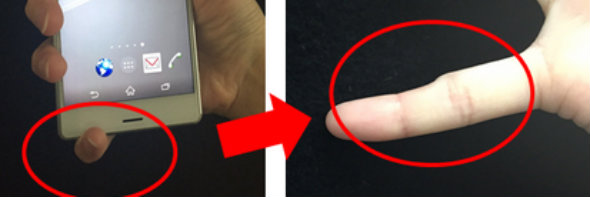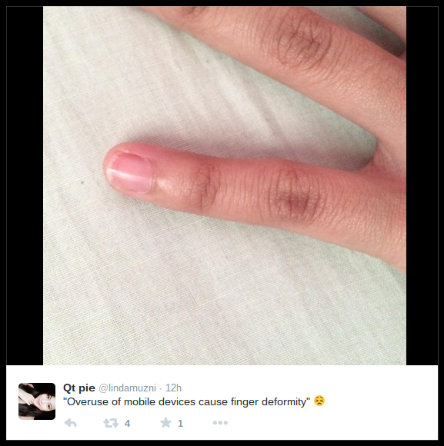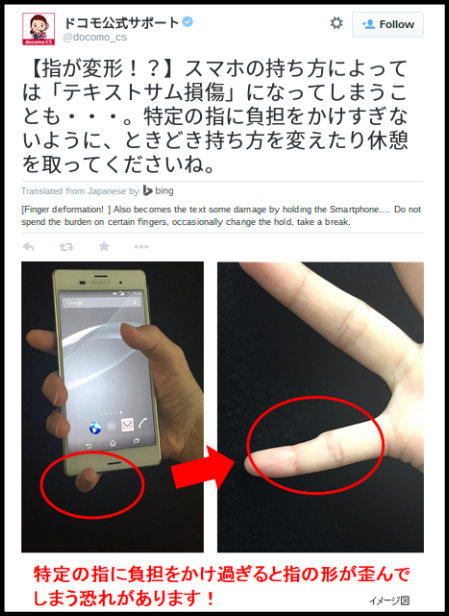
Claim: Holding a smartphone incorrectly will result in a finger deformity known as "smartphone pinky."
Example: [Collected via twitter, February 2015]

Origins: On

DOCOMO did not provide any links to a medical source nor any information about the origins of the hand photo shown in the above-displayed image. Still, the warning (which roughly translates to "Finger deformation! Damage by holding the
"@amygruner: smartphone pinky is real pic.twitter.com/MUjeNLlTi1"
— kody (@KodyPilkinton) March 16, 2015
It's possible that some smartphone users have experienced pinky pain from overusing their devices (this type of injury is referred to as a repetitive strain injury [RSI] and has been used to describe technology-related traumas such as
"The smartphone grip is quite similar to when you hold a small stone core or handaxe, so it's essentially doing the same job."
So where did all the photographic examples of "smartphone pinky" come from? The most likely answer is that these pictures do not show finger deformities caused by holding cellphones; instead, these images likely depict a condition known as clinodactyly, which is identified by a slight curvature of the fingers. This condition often goes undiagnosed since only severe cases interfere with normal function.
Last updated: 19 March 2015
Sources: |
